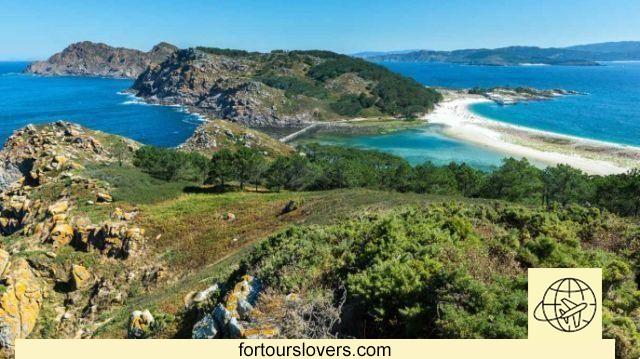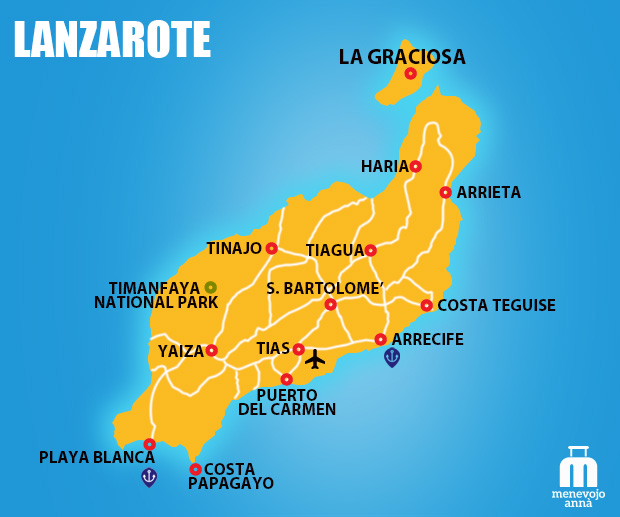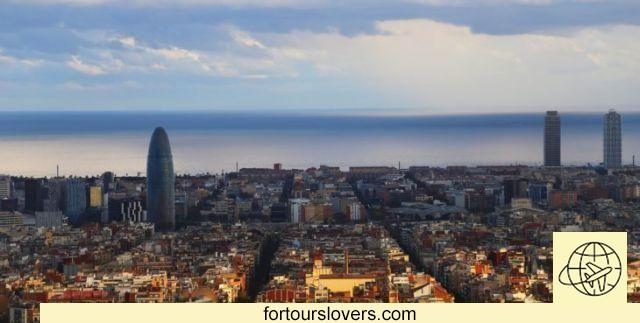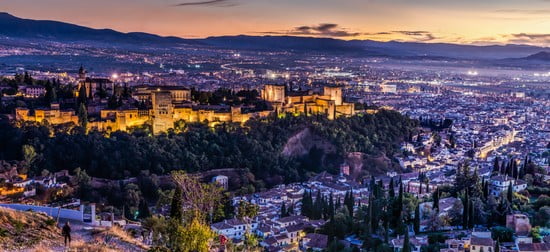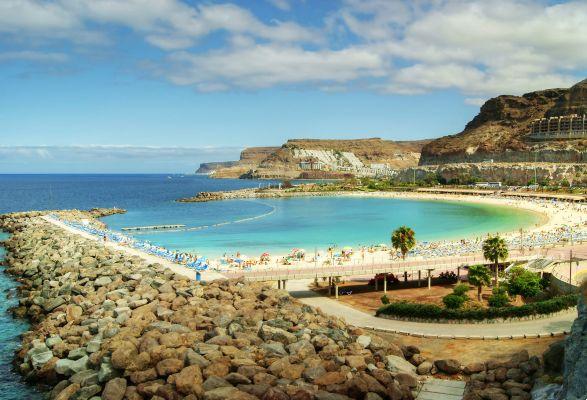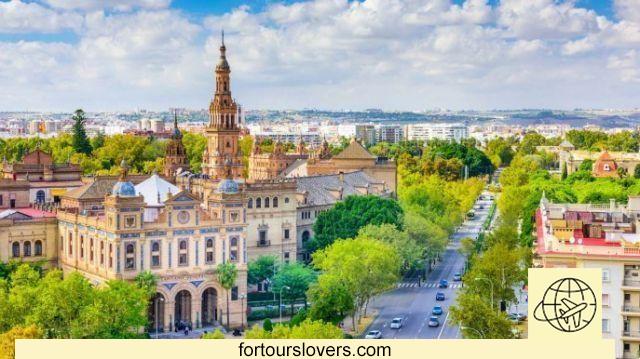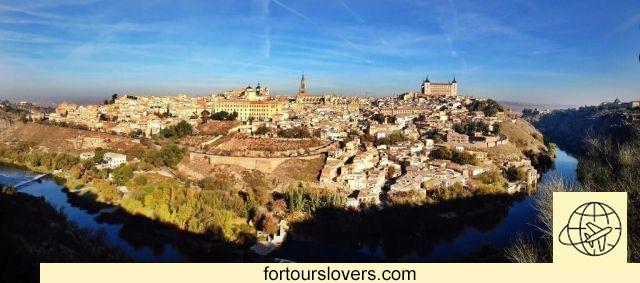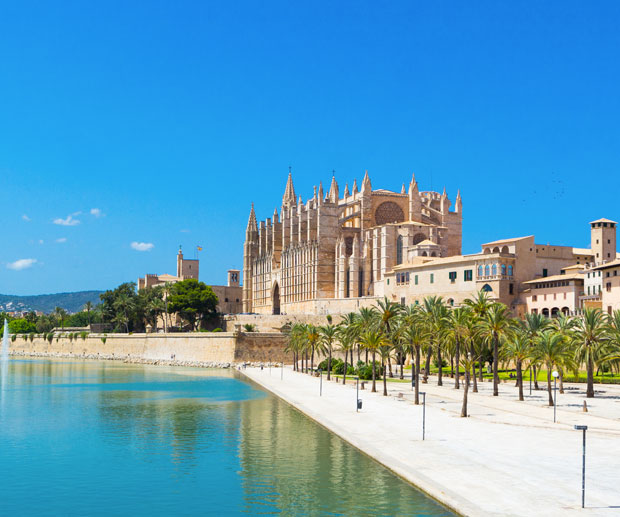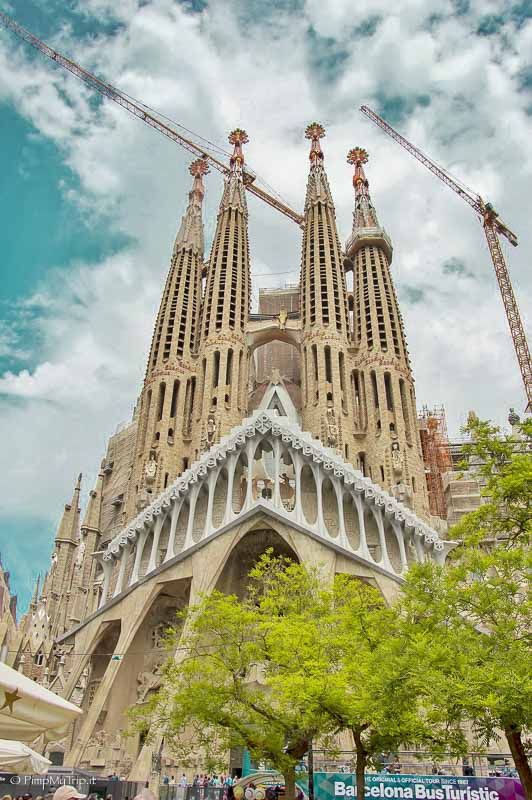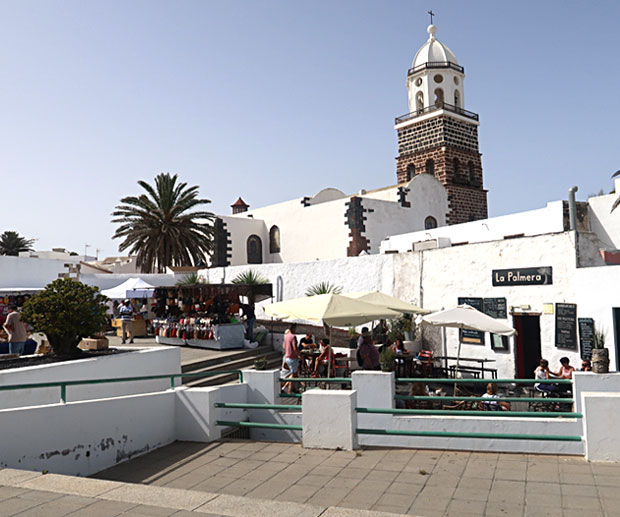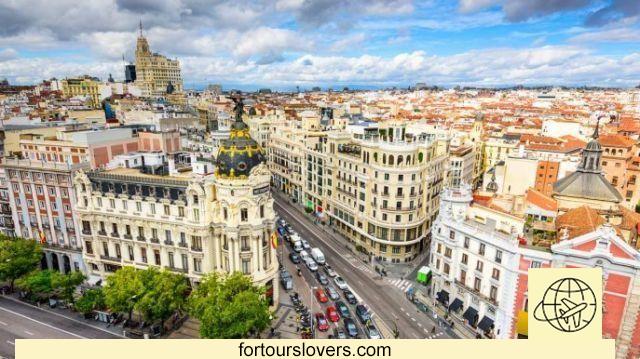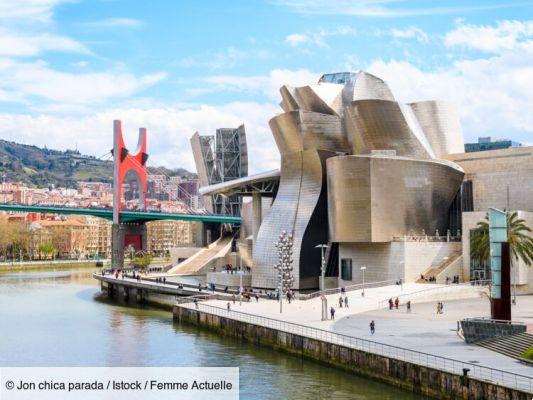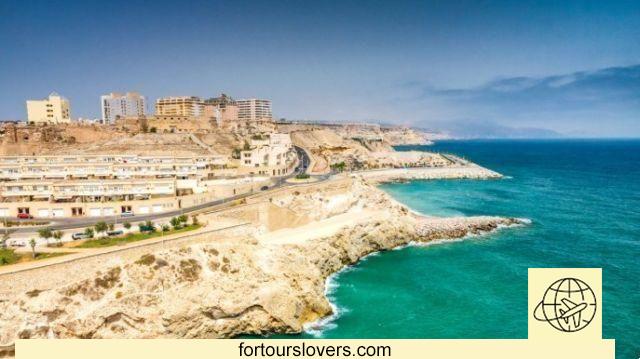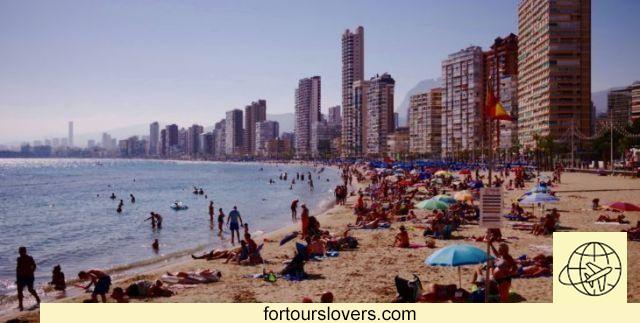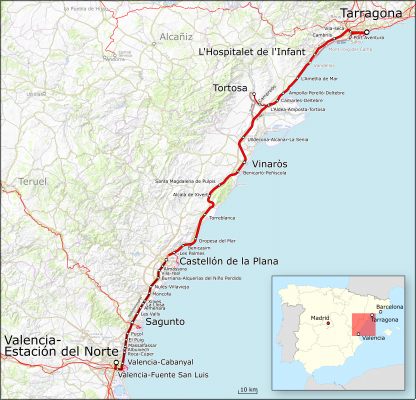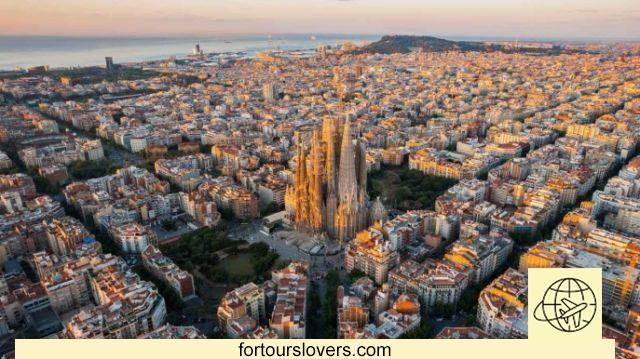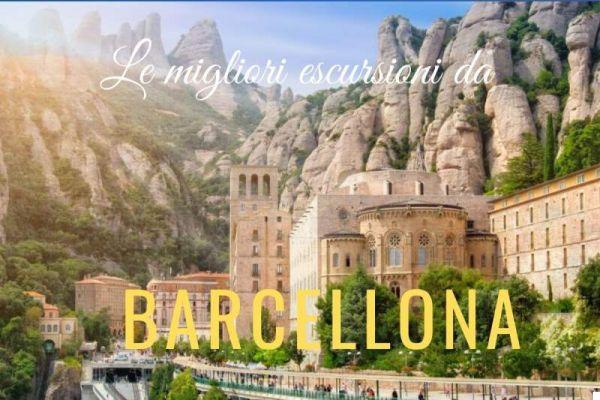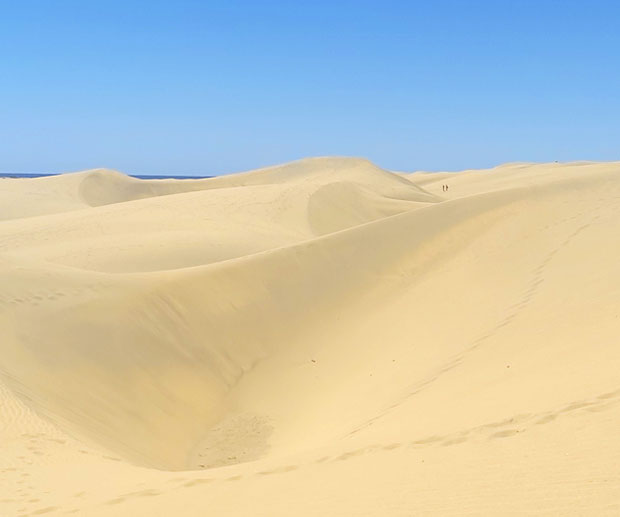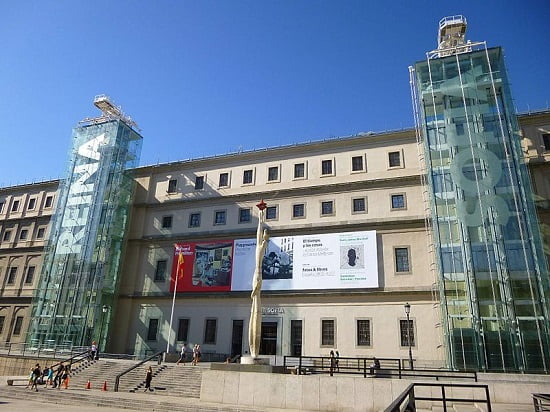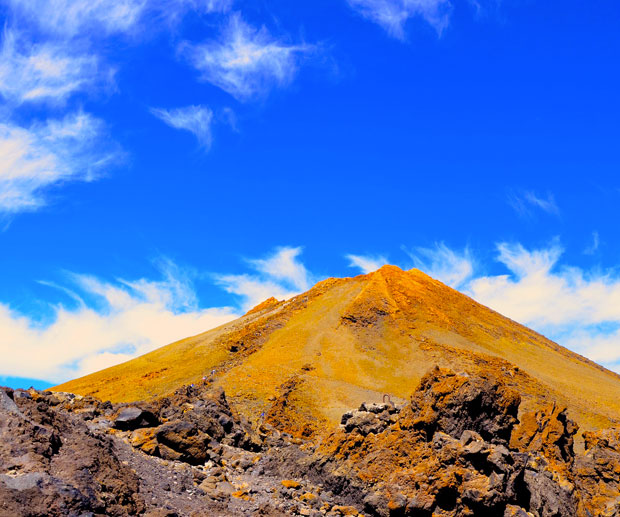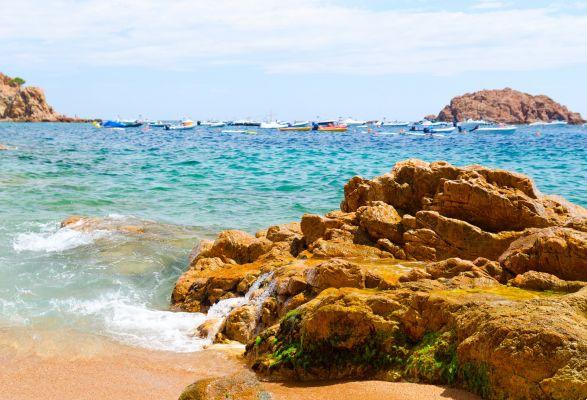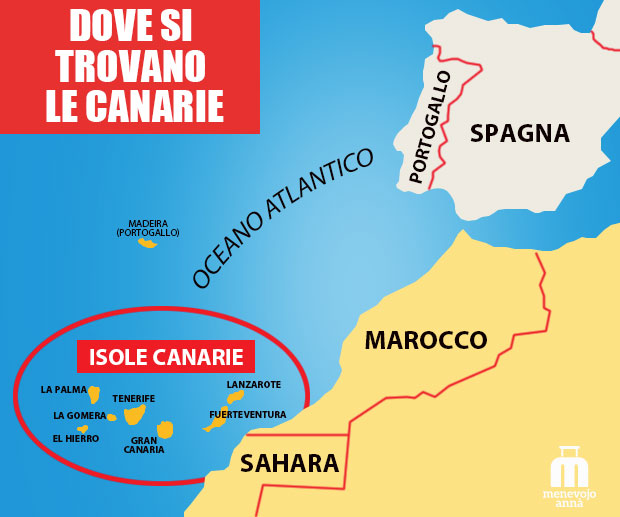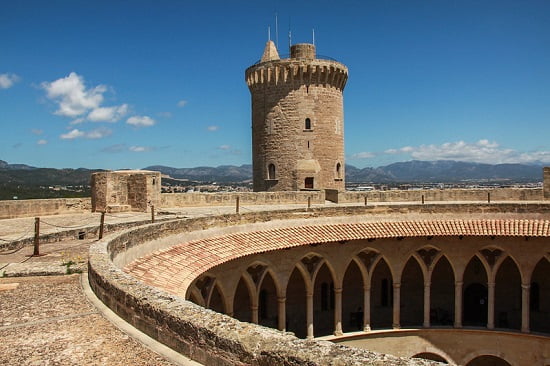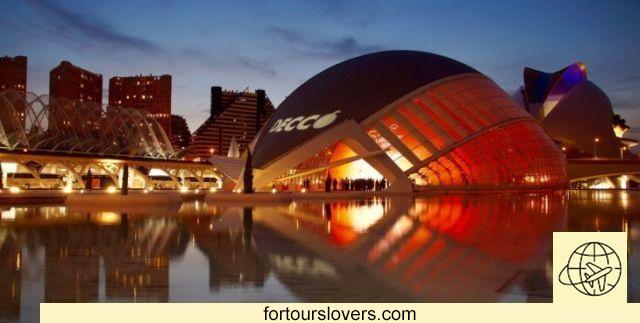
Valencia
11 things to do and see in Valencia and 1 not to doValencia is a city that lives on paradoxes. The first, historically sensational, was the financing by the local bank (“Taula de Canvis i Deposits”) of expedition of Christopher Columbus. Throughout the fifteenth century the city had experienced a period of great expansion thanks to the strategic role of its port in the Mediterranean trade and, instead, the mission of Columbus ended up moving the maritime axis towards the Atlantic Ocean, effectively decreeing the end of the Valencian golden century. The other paradox, much more recent, luckily has a positive value. For years, in fact, the city has lived a tourist boom which is unbelievable considering the fewer attractions compared to Madrid and Barcelona. Yet, at the turn of the XNUMXth and XNUMXst centuries, Valencia has become one of the most popular destinations in Europe, a circumstance that led to the tourism to be there first economic resource ousting trade, agriculture (which resists) and industry. Therefore, more than in the quantity of points of interest, the tourist success of Valencia is to be found in theatmosphere that you breathe in the city: a mix of tradition and modernity (in the cover image the futuristic City of Art and Sciences, see point 3) thanks to which the Valencians managed to put the difficult financial crisis of 2008. Obviously, there are plenty of things to do and see. are different and on these we will build our story below. Happy reading.
1 The Cathedral
La Catedral Santa Maria de Valencia (or Seu) and the start point ideal for a visit to the city. For two reasons: the first is the centrality of the building, a few hundred meters from other points of major tourist interest; the second is historical, since the overlapping of different architectural styles (Gothic-Romanesque; Baroque; Neoclassical) allows you to reconstruct the artistic ferment that has crossed the city over the centuries. The church, in fact, was built in the thirteenth century in place of an Arab mosque which, in turn, was built on the remains of a pagan temple. Circumstances that testify to the antiquity of the residential settlement, called by the Romans Valentia Edetanorum and from the Moors, instead, Balansiya. It was James I of Aragon who defeated the Arabs and ordered the construction of this church with three naves and a Latin cross. A building that, although not majestic, offers various historical and cultural points. Starting with three entrance portals (Puerta del Palau; Puerta de los Hierros and Puerta de los Apóstoles) passing through the Diocesan Museum up to Santo Caliz chapel in which - as the name suggests - the Holy Grail, the chalice from which Jesus would drink at the Last Supper. It's not over, because there is also there to see "El Miguelete" Tower, bell tower of the cathedral. You have to climb over 200 stairs at the end of which, however, you will enjoy a wonderful view of the historic center of Valencia. For more information on the history, hours of masses, pastoral activities and guided tours consult the Official site: www.catedraldevalencia.es (English version available).
2 Town Hall Square
As an alternative to the Cathedral, the city tour can also begin from Town Hall Square (in Valencian Plaça de l'Ajuntament). The distance between its sites is minimal (just over 1 km) and, in terms of history, this square is certainly not second to the others around Valencia. Here too, what is striking is there miscellany of architectural styles, above all neoclassical and modernist which suggest the (relative) contemporaneity of the buildings, mostly built at the beginning of the XNUMXth century. The two most important buildings are precisely the town hall (Town hall) And the Post Office building (Building de Correos y Telegrafo). Especially the latter is worth a visit regardless of the need to send a postcard. The square, during the dictatorship, housed a statue of General Francisco Franco (the topos, in fact, was Plaza del Caudillo). Statue promptly replaced in the aftermath of the end of the regime with another dedicated tolocal hero Francesc de Vinatea. Knight of the kingdom of Valencia during the XNUMXth century, de Vinatea was one staunch defender of the prerogatives of the city against the sovereign Alfonso IV of Aragon. Plaza del Ayuntamiento is also de main stage The Fallas, the most important city festival, UNESCO Intangible Heritage of Humanity (to find out more: www.fallas.com).
3 City of Art and Sciences
The tourist primacy of Valencia that we mentioned at the beginning is mainly due to this complex of buildings made by archistar Santiago Calatrava e Felix Candela. The Ciutat de les Arts i les Ciènces, in fact, it is a hymn to contemporary architecture able to attract visitors from all over the world. To do what? For example to see thelargest aquarium in Europe (Oceanografic); or the interactive exhibits of the Science Museum named after Prince Felipe (Museu de i les Ciènces Principe Felipe). Still, there is room for music lovers who in the Palace of the Arts of Queen Sofia (Palau de Les Arts Reina Sofia) can attend classical operas, concerts and ballets, without forgetting, Hemisferic, Umbracle and Assut D'Or bridge. The first is a cinema with a concave screen of about 900 square meters on which scientific documentaries for adults and children are projected; Umbracle, on the other hand, is a huge garden in which sculptures and Mediterranean plants alternate; while the Assut D'Or is a steel and concrete bridge whose pylon stands over 100 meters high. Beyond the individual attractions, it is the overall view of the architectural complex that leaves you astonished. Despite the hyper-modern approach, in fact, the Ciutat de les Arts i les Ciènces in Valencia retains aMediterranean aura able to attract a larger number of tourists than the audience of technology, theater and nature enthusiasts alone. To be seen!
For visiting hours, tickets and programming of each building consult the Official site: www.cac.es (English version available).
4 Jardin del Turia
On 14 October 1957 Valencia was literally brought to its knees byflood of the Turia river. Dozens of dead, houses and businesses destroyed; agriculture and industry ko An apocalyptic scenario that the Spanish press renamed the "gran riada de Valencia". The response of the government, then led by Generalissimo Francisco Franco, was not long in coming. The solution was that of divert the river to the south in order to avoid the repetition of what happened. A safety plan ( "Plan Sur“) Whose ambitions soon became wider. At a certain point, in fact, the idea of transforming the bed of the river freed from debris and water into a huge motorway junction able to more easily connect Madrid to the Mediterranean made its way into government circles. A giant urban transformation project which would have impacted in a very violent way with the center of Valencia and which therefore met very strong resistance from the local ruling class. The mobilization, fortunately, had its effects and nothing came of the highway plan. Instead, the beautiful arose Jardin del Turia, A 'green oasis of almost 10 kilometers that from the medieval walls of Valencia leads right into the Ciudad de las Artes y las Ciencias that we spoke about earlier. To design the gardens, thearchitect Riccardo Bofill which, to the delight of tourists and residents, has endowed the city with a green lung in which different alternatives thematic areas: cyclocross circuits, athletics tracks, skating, football fields, rugby and naturally benches, oleanders, palm trees, flower beds and flowers everywhere. Wonder!
5 Valencian Institute of Modern Art
One of the axes on which Valencia has built its tourist leadership in the last 30 years is undoubtedly culture. Despite the old adage according to which "culture does not eat", the Valencian museum network has greatly contributed to the tourist GDP of the city and the region. THE'IVAM (in Valencian, Institut Valencià d'Art Modern), from this point of view, is one of the flagships of the city. Opened in 1986, this museum counts more 11.000 works including painting, sculpture, photography and video-installations. One part houses the permanents of Ignacio Pinazo (1849-1916) and Julio Gonzales (1876-1942), which since 2000 has also been entitled to an artistic prize. A second part, on the other hand, hosts temporary exhibitions of the other avant-gardes that marked the cultural scene of the early 900th century in Spain together, obviously, with the works of contemporary artists. Finally, the Sala de la Muralla, built in the basement of the main building using the remains of the medieval fortification of Valencia.
For the orari di apertura of the IVAM see the table.
| Days | Working Time |
| Mon | closed |
| Tue-Wed-Thu | 11:00 19:30 |
| Fri | 11:00 21:00 |
| Sat-Sun | 11:00 19:30 |
For more information on history, exhibitions, activities and prices visit the Official site: www.ivam.es (English version available).
6 Lonja de la Seda
At the beginning we referred to the strong mercantile vocation that accompanied him economic and civil development of Valencia during the fourteenth century. The Lonja de la Seda is Lonja de los Mercadores (Loggia della Seta or dei Mercanti), is the symbol of this commercial primacy. In this late Gothic palace in fact, negotiations took place between wholesalers and buyers. Not only that, because the building also housed one Bank and Consulate of the Mar, a medieval institution whose task was precisely to define the legal framework of trade in the Mediterranean. A historic building, therefore, consisting of two bodies of factory it's a central tower. Of the different rooms that draw the interior of the building, especially the Hall of the Contration overlooking the internal courtyard. Every Sunday the Lonja de la Seda which, we remember, is UNESCO World Heritage Site, hosts an antiques market. A great opportunity to visit the building. Not to be missed!
7 Central Market
Just opposite the Lonja de la Seda stands another building of great tourist and commercial importance: the Central Market (Valencian, Mercat central). Since 1928, the year in which the covered structure was completed, thismodernist building contends with the Boqueria of Barcelona the palm of the best market in all of Spain. Both the freshness of the products (meat, fish, fruit, vegetables, etc.) and the architectural details contribute to the evaluation. The latter betray theinfluence of art noveaux under a double aspect: the design of the roof (the central dome exceeds 30 meters in height) and the materials used (crystal, iron and ceramic). After all, it was a question of combining thepride in technological progress and agricultural vocation still present. One widespread entrepreneurial spirit which in the mid-80s led the sellers present in the market to self-manage themselves by providing for the maintenance and safety of the area by themselves (obviously in concert with the municipality). to know more on the history, timetables, products and services of the Central Market of Valencia consult the place: www.mercadocentralvalencia.es (Spanish version available).
8 College and Church of the Patriarch
One of the unmissable attractions in Valencia is the College of the Patriarch. From an architectural point of view we are in the presence of one of the most important testimonies of the Spanish Renaissance. From the religious point of view, however, the college and the annexed church fully represent it spirit of the Counter-Reformation. Not surprisingly, it was the architect who wanted its construction at the end of the XNUMXth centuryArchbishop of Valencia Juan de Ribera ("El Patriarca"), one of the most determined disseminators of the precepts sanctioned by Council of Trent. The college, in fact, served to train the new prelates to be "committed" on the level of doctrine against the snares of Protestantism. Briefly said of history, the Collegio de El Patriarca is a treasure trove of works of art. Very beautiful the cloister on the ground floor whose colonnade was made according to the Brunelleschi's perspective method. Finally, to be seen in the same square where the college stands (Plaza Patriarca), Nau, headquarters ofUniversity of Valencia. Here too we are in front of a beautiful neoclassical building, obviously adapted over the centuries to the proliferation of faculties and didactic addresses. For more information on the College of the Patriarch consult the place: patriarcavalencia.es (English version available).
9 Museum of Fine Arts
Il cultural tourism is a important resource for Valencia. We have repeated it several times, but it is worth reiterating it also with regard to the Museu de Belles Arts, another unmissable stop on a visit to the city. Like the College of the Patriarch San Juan de Ribera, the seat of the Museum of Fine Arts was born as a seminary for the formation of the new ecclesiastical classes. Only later did the structure, which is located near the old bed of the Turia river, become a museum becoming a branch of the Real Accademia de Bellas Artes de San Carlos de Madrid. From 1837 (year of foundation) to today, the Valencia Museum of Fine Arts has undergone various architectural transformations which, in a certain sense, have accompanied those that have taken place in the economic and social sphere of the city. On the artistic level the collection consists of two parts: a archeological, with many ancient pieces from the Roman age (tombstones, figures in stone, bronze, ceramic finds, etc.) and one painterly with the works of some of the most significant exponents of Spanish painting (Velasquez, Ribalta, Goya, Sorolla etc.).
For the orari di apertura see the table.
| Days | Working Time |
| Mon | closed |
| Tue-Sun | 10:00 20:00 |
For more information visit the Official site: www.museobellasartesvalencia.gva.es
10 Biopark
Opened in the 2008, the Bioparc of Valencia it's a innovative zoological garden in which the animals, albeit in captivity, live in environments that reproduce as faithfully as possible theoriginal habitat of each species. Not only. Even the barriers that separate the different areas (savannah, equatorial forest, wetlands, etc.) they have been designed in such a way as to minimize the visual impact for the benefit of guests who at all times have the perception of being face to face with the animals. Animals that are really many: zebras, storks, warthogs, gazelles, hyenas, giraffes, lions, buffaloes, chimpanzees, gorillas, elephants, hippos etc. Mention apart for the rare Oritteropo, better known as "Earth pig". It is an endangered species territorially present throughout sub-Saharan Africa and, at the very beginning of 2018, a new specimen was born in the Bioparc of Valencia. In short, after churches and museums, a visit to the innovative zoo of Valencia is what you need, especially if you are traveling with your children in tow. For the timetables of the Bioparc of Valencia (i closing times depend on the hours of sunshine available at different times of the year) consult the Official site: www.bioparcvalencia.es (Spanish version available).
11 The beaches and the Albufera
So far we have gone around squares, museums and churches with a final episode at the Bioparco. But woe to forget that Valencia is also a seaside resort. The city beaches are Las Arenas e Malvarrosa and combine cleanliness of the waters, beaches, showers, cabins and, of course, numerous bars and restaurants. A little further south of Malvarrosa, in the municipality of Alboraya, there is The Patacona, also this equipped with showers and cabins for tourists. Finally, we must not forget the beaches of the Albufera Park: Playa de l'Arbre del Gos, Playa de El Saler, Playa de la Devesa and the other corners of paradise of this beautiful naturalistic area 10 kilometers south of Valencia. Furthermore, the Ambulfera can be toured both by boat and by tourist bus. For the latter option consult the place: valenciabusturistic.com (Spanish version available).
1 Don't think it's all pink and flowers
There are no contraindications to a holiday in Valencia. The city, in fact, offers about the same opportunities as Barcelona and Madrid but, compared to these two, it is more liveable. It is no coincidence that many Spaniards have moved, and even more are those who come on vacation every year. But be careful to consider this city as the solution to all problems. To be clear, this is a bit like what also happens with the Canary Islands. Are you precarious, poorly paid and subjected to exhausting work rates? Move to Valencia! It's not that easy. In Spain, too, the crisis had a significant impact on incomes and employment. It is also true that the the labor market is more dynamic than in many other areas of southern Europe (just think of the south of Italy and Greece) but this does not mean finding the road cleared. You have to have desire to get involved and above all to be clear what the ambitions are. To say, opening a bar and / or a restaurant is certainly feasible provided, however, the idea has something innovative that allows you to stand out from the competition (a lot). Perhaps the best way to reflect is to come on vacation. Between museums, squares, churches, folklore, nightlife, beaches and food and wine there is enough material to have fun and possibly shed some light on what to do.




